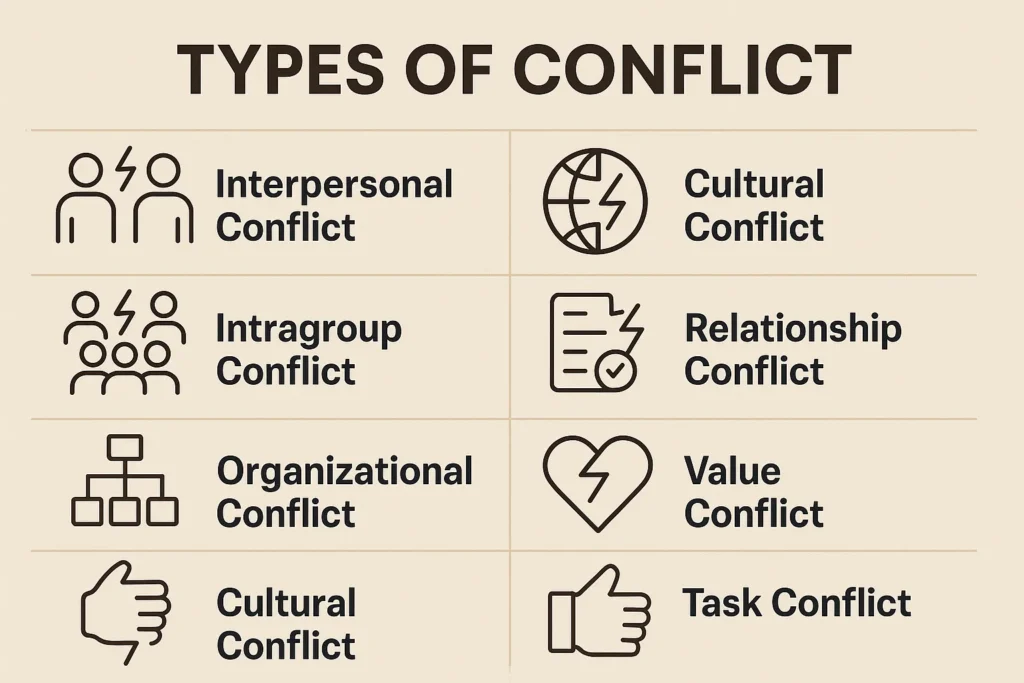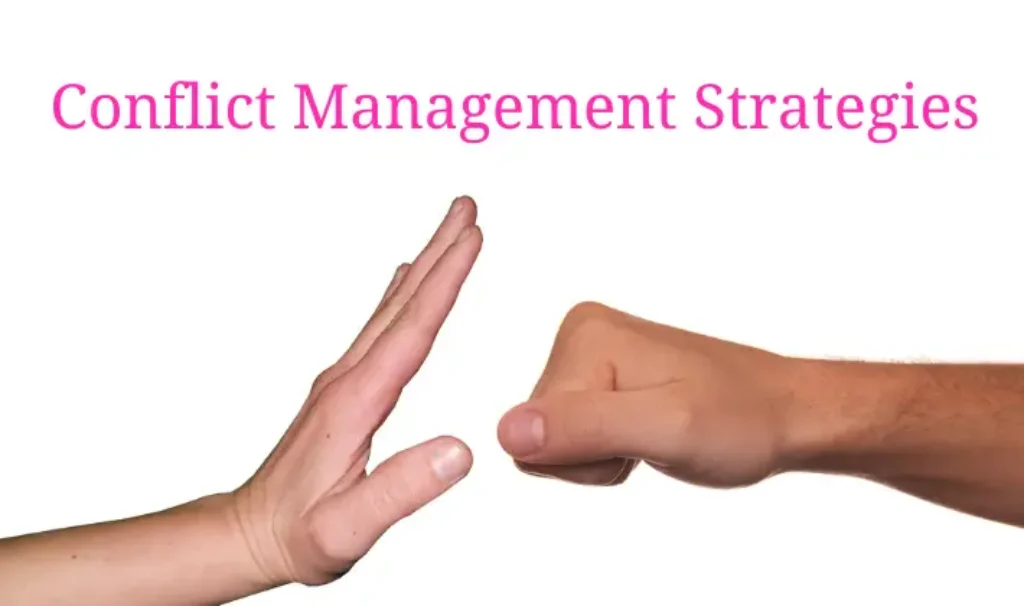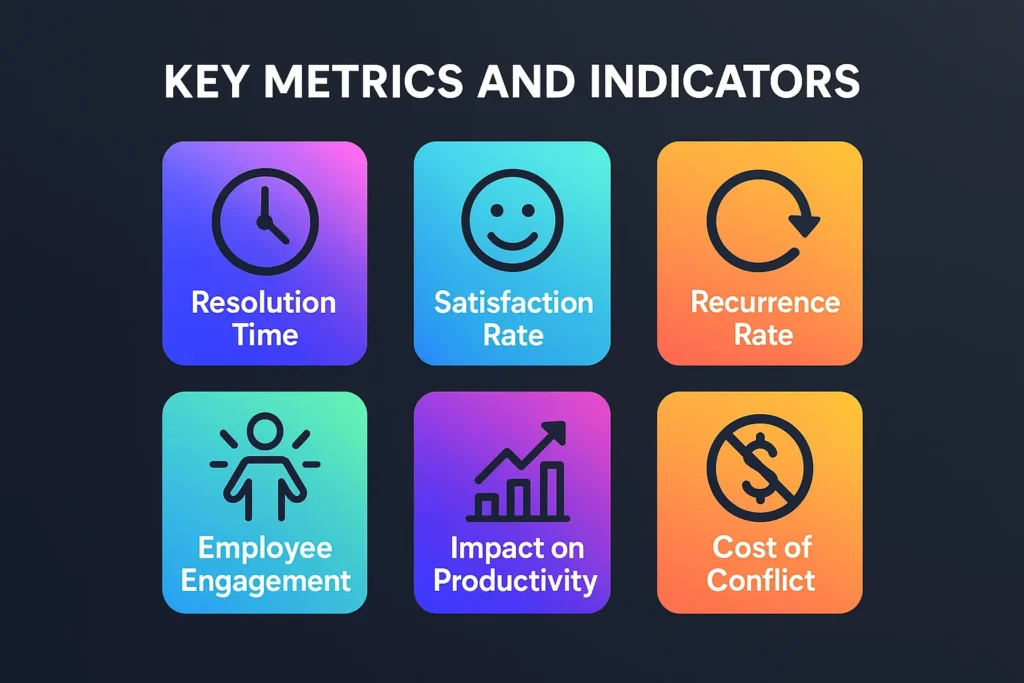
Executive Summary
Conflict management is the process of identifying, addressing, and resolving disagreements or disputes in a constructive manner. Conflicts can arise in personal relationships, workplaces, organizations, and society at large. Effective conflict management aims to prevent disputes from escalating, foster understanding, and create solutions that satisfy all parties involved.
Whether in business, education, or social settings, the ability to manage conflict is a critical skill for leaders, managers, and individuals. It helps maintain positive relationships, enhances collaboration, improves productivity, and ensures a healthy organizational culture. This guide provides an in-depth understanding of conflict management, its types, processes, strategies, benefits, challenges, tools, and practical applications.
Table of Content
Introduction
Conflict is a natural part of human interaction. Differences in opinions, values, needs, or goals can lead to disagreements. Left unmanaged, conflict can escalate into hostility, inefficiency, or organizational disruption. Conflict management is not about avoiding disagreements; rather, it is about addressing them constructively to minimize negative impacts and maximize opportunities for growth and improvement.
The concept is widely applied in organizational behavior, project management, negotiation, and interpersonal communication. By mastering conflict management, individuals and organizations can navigate disputes effectively, strengthen relationships, and achieve mutually beneficial outcomes.
Core Concepts of Conflict Management
- Definition of Conflict – A disagreement between individuals, teams, or groups due to differences in interests, values, opinions, or goals.
- Conflict Management – The structured approach to handling disputes constructively to minimize negative consequences.
- Conflict Resolution vs. Conflict Management – Conflict resolution focuses on ending disputes entirely, while conflict management seeks to control and handle conflicts productively.
- Conflict Styles – Approaches individuals take toward conflict, such as avoidance, accommodation, competition, compromise, and collaboration.
- Constructive vs. Destructive Conflict – Constructive conflict fosters growth, innovation, and problem-solving, while destructive conflict harms relationships and productivity.
- Communication in Conflict – Open, clear, and respectful communication is key to understanding and managing conflicts.
- Negotiation and Mediation – Tools and processes used to reach agreements and resolve disputes amicably.
- Emotional Intelligence – Understanding and managing emotions, both one’s own and others’, is crucial for effective conflict management.
Recommended Course: Conflict Resolution Skills
If you’re looking to handle conflicts more effectively — whether in teams, with clients, or between stakeholders — this course is a smart next step. You’ll build stronger communication, listening and planning skills so disputes don’t derail your project or team.
A solid choice to level up your conflict-management toolkit.
Types of Conflict

1. Interpersonal Conflict
- Occurs between two or more individuals due to personal differences, communication issues, or misunderstandings.
2. Intragroup Conflict
- Arises within a team or group, often due to differing opinions, goals, or work styles.
3. Intergroup Conflict
- Occurs between different teams, departments, or organizations, usually over resources, responsibilities, or priorities.
4. Organizational Conflict
- Structural conflicts that emerge due to policies, hierarchies, or organizational changes.
5. Cultural Conflict
- Differences in values, beliefs, or practices between individuals from different cultural backgrounds.
6. Task Conflict
- Disagreements related to the content, goals, or execution of tasks and projects.
7. Relationship Conflict
- Emotional or personal disagreements that affect relationships, trust, or morale.
8. Value Conflict
- Conflicts based on differences in beliefs, ethics, or personal values.
Causes of Conflict
- Poor Communication – Misunderstandings or lack of clarity in information sharing.
- Resource Scarcity – Competition for limited resources like budget, time, or personnel.
- Different Goals or Priorities – Conflicting objectives among individuals or teams.
- Personality Differences – Divergent behavior styles or temperaments.
- Organizational Change – Restructuring, mergers, or policy changes can trigger disputes.
- Cultural and Diversity Factors – Differences in norms, traditions, and values.
- Stress and Pressure – High workload, deadlines, or pressure can heighten tensions.
- Power and Authority Struggles – Conflicts over decision-making and control.
Conflict Management Processes
1. Conflict Identification
- Recognizing the early signs of conflict before it escalates.
- Monitoring behaviors, communication, and work patterns to detect disputes.
2. Conflict Analysis
- Understanding the root causes, parties involved, and potential impact.
- Determining whether the conflict is constructive or destructive.
3. Setting Goals for Conflict Management
- Defining desired outcomes, such as resolution, compromise, or improved relationships.
- Ensuring alignment with organizational or personal objectives.
4. Choosing a Conflict Management Style
- Selecting an approach based on context, importance of relationships, and desired outcomes:
- Avoiding – Temporarily stepping away from conflict to reduce tension.
- Accommodating – Prioritizing the other party’s needs over one’s own.
- Competing – Assertively pursuing one’s own goals, often in high-stakes situations.
- Compromising – Finding a middle ground acceptable to all parties.
- Collaborating – Working together to create mutually beneficial solutions.
5. Implementing Conflict Resolution Strategies
- Using negotiation, mediation, or facilitation techniques to resolve disputes.
- Encouraging open dialogue, empathy, and active listening.
6. Monitoring and Follow-Up
- Ensuring agreements are implemented and relationships are maintained.
- Assessing the effectiveness of conflict management strategies.
Conflict Management Strategies

- Open Communication – Encouraging transparency and honest discussion of issues.
- Active Listening – Understanding each party’s perspective fully before responding.
- Negotiation and Mediation – Using neutral third parties or structured dialogue to reach agreements.
- Collaborative Problem-Solving – Engaging all parties to develop solutions that satisfy everyone.
- Setting Clear Expectations – Defining roles, responsibilities, and acceptable behaviors.
- Fostering Emotional Intelligence – Building empathy, self-awareness, and self-regulation skills.
- Team-Building Activities – Strengthening relationships to reduce conflict triggers.
- Conflict Policies and Guidelines – Establishing procedures for addressing disputes systematically.
- Training and Development – Educating employees and leaders on conflict management techniques.
- Early Intervention – Addressing conflicts promptly to prevent escalation.
Benefits of Effective Conflict Management
- Enhanced Communication – Encourages transparency and understanding.
- Improved Relationships – Strengthens trust and collaboration among individuals and teams.
- Higher Productivity – Reduces workplace distractions and inefficiencies caused by conflict.
- Better Decision-Making – Incorporates diverse perspectives and solutions.
- Reduced Stress – Creates a healthier work or social environment.
- Innovation and Creativity – Constructive conflict encourages idea generation and problem-solving.
- Organizational Stability – Maintains a harmonious and professional work culture.
- Personal Growth – Develops leadership, negotiation, and emotional intelligence skills.
Effective conflict management is closely tied to strong leadership, organizational strategy, and human capital practices.
- To learn how consultants help organizations resolve internal challenges and improve collaboration, explore What Is Management Consulting?.
- Building healthy team dynamics also relies on managing people effectively — dive into What Is Human Capital Management (HCM)? and What Is Talent Management? to understand how structured workforce strategies prevent conflicts before they begin.
- Strong communication and relationship-building play a key role too — check out What Is Customer Relationship Management (CRM)? for insights into maintaining long-term trust and harmony across teams.
- Finally, if you want to see how broader management systems balance people and processes, explore What is change management?, and What Is Workforce Management?
Challenges in Conflict Management
- Resistance to Change – Parties may be unwilling to compromise or adapt.
- High Emotion Levels – Anger, frustration, or defensiveness can escalate conflicts.
- Power Imbalances – Differences in authority can hinder fair resolution.
- Cultural Barriers – Misunderstandings due to differing norms and communication styles.
- Lack of Skills – Inadequate training in conflict management or emotional intelligence.
- Delayed Intervention – Waiting too long to address conflict can worsen the situation.
- Complex Issues – Multi-faceted conflicts may involve multiple parties and factors.
Conflict Management Tools and Techniques
- Mediation – Using a neutral third party to facilitate resolution.
- Negotiation – Structured discussion to reach a mutually acceptable agreement.
- Facilitation – Guided dialogue with an objective facilitator to improve understanding.
- Conflict Resolution Training – Programs teaching strategies, communication, and negotiation skills.
- Personality and Behavioral Assessments – Tools like MBTI, DISC, or Emotional Intelligence assessments to understand individual differences.
- Feedback Mechanisms – Surveys, suggestion boxes, or anonymous reporting systems.
- Collaboration Software – Tools like Microsoft Teams, Slack, or Trello to enhance communication and transparency.
- Conflict Logs and Documentation – Maintaining records to track patterns and resolutions.
Real-World Applications
- Workplace Conflict Management – Resolving disputes between employees, teams, or departments to improve collaboration and productivity.
- Project Management – Handling disagreements in project priorities, resource allocation, or responsibilities.
- Customer Relationship Management – Addressing conflicts between organizations and clients to maintain satisfaction and loyalty.
- Negotiation and Business Deals – Resolving disputes in contracts, partnerships, or mergers.
- Educational Settings – Managing conflicts among students, faculty, and staff.
- Community and Social Conflicts – Facilitating dialogue and resolution in local communities or organizations.
- Family and Personal Relationships – Applying conflict management principles to strengthen relationships at home.
Key Metrics and Indicators

- Resolution Time – Average time taken to resolve conflicts.
- Satisfaction Rate – Level of satisfaction with conflict outcomes among parties.
- Recurrence Rate – Frequency of the same conflict arising again.
- Employee Engagement – Measure of morale and collaboration post-conflict.
- Impact on Productivity – Assessment of work output affected by conflict.
- Cost of Conflict – Financial impact of disputes on the organization or project.
Future of Conflict Management
- Digital Conflict Resolution Platforms – Online mediation and negotiation tools.
- AI and Analytics – Predicting potential conflicts and suggesting proactive interventions.
- Cultural Intelligence Training – Preparing global teams to handle cross-cultural conflicts effectively.
- Remote and Hybrid Work Considerations – Adapting strategies for conflicts in virtual environments.
- Integration with HR and Organizational Policies – Embedding conflict management into broader organizational systems.
- Focus on Emotional and Social Intelligence – Prioritizing interpersonal skills to prevent conflicts.
Conclusion
Conflict management is a vital skill for individuals, teams, and organizations. By identifying conflicts early, understanding underlying causes, and applying structured strategies, organizations can transform potential disputes into opportunities for growth, innovation, and stronger relationships. Effective conflict management fosters a collaborative environment, improves productivity, and supports both personal and organizational success.
Whether in the workplace, community, or personal life, mastering conflict management ensures disputes are handled constructively, relationships are preserved, and goals are achieved efficiently.


